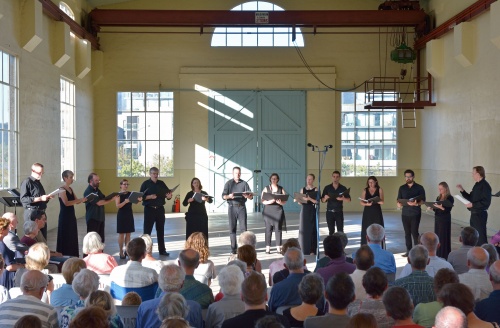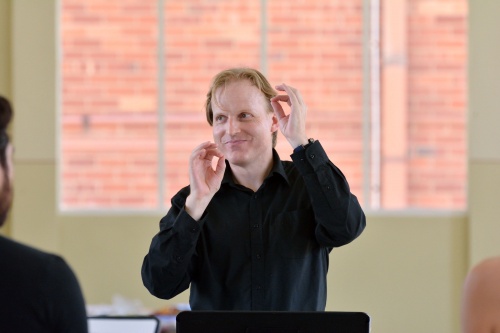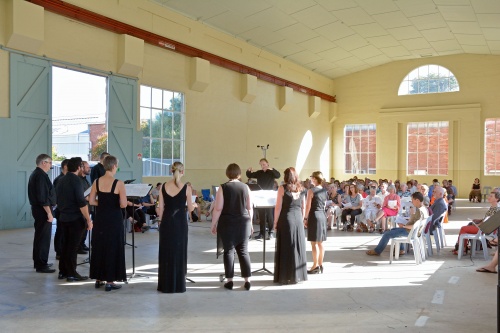POLYPHONY, or put more simply, music in parts, is one of the glories of European music and Coro chamber ensemble has taken on a celebration of this phenomenon to its full capacity.
In a program intricately researched by choir member Andrew Fysh, Coro and its guest conductor Peter Tregear, arranged themselves around the capacious Fitters’ Workshop in different configurations as they moved from comparatively simple unison singing – number 1 – to singing in 12 parts. Addressing the fact that there are 13 members of Coro, the encore brought us 13 parts.This was as much as anything an experiment with the Fitters’ Workshop as a usable performance space, since on hiring it, Coro found itself with a completely empty room that meant guessing the attendance figures and hiring the right number of chairs.
Controversial as the use of the workshop has been in the past, “Music by numbers” showed its potential for magnificence. Tregear had 13 people feeling like 130 as the full-bodied sound of early and late Renaissance polyphonic music resonated throughout the space.In 1562 or thereabouts, when Palestrina wrote his celebrated mass in honour of Pope Marcellus II, the Council of Trent was busy discussing the liturgical use of polyphonic music, suspecting it of being based on bawdy secular songs. In fact, Coro chose only one secular drinking song, an early 16th century work in three parts by Jean Richafort, “Trut avant, il faut boire,” performed with considerable gusto.
In complete contrast, Coro’s performance of the Credo from the 6-part “Missa Papae Marcelli” was sophisticated and devotional, with at least one choir member unable to mask her deep emotion during the performance. Palestrina is said to have appeased the authorities with this mass, thus ensuring the health of polyphony.
As the program progressed towards its natural climax, members of Coro changed their configuration, sometimes, as in de Victoria’s “Missa pro victoria” in 9 parts separating the choir into different sections and occasionally allowing conductor Tregear to step in and participate in the singing.
By and large the power and the strength of the performance increased with the numbers and di Lasso’s declamatory “Aurora lucis rutilat” in 10 parts was particularly potent.
In the magnificent penultimate 11-part work, Hassler’s “Misere Mei Deus”, based on Psalm 51, (discovered by Fysh to the “great relief” of Coro since this was expected to be the hardest number of all) Coro split three ways, reaching a superlative conclusion.
The final 12-part setting of the Antiphon of the Virgin Mary, “Regina caeli laetare” by Nicholas Gombert was performed in a circle, bringing depth and sonority to the end of a performance that confirms Coro’s special place in the Canberra musical landscape.The post Review: Numbers stack up for Coro appeared first on Canberra CityNews.


